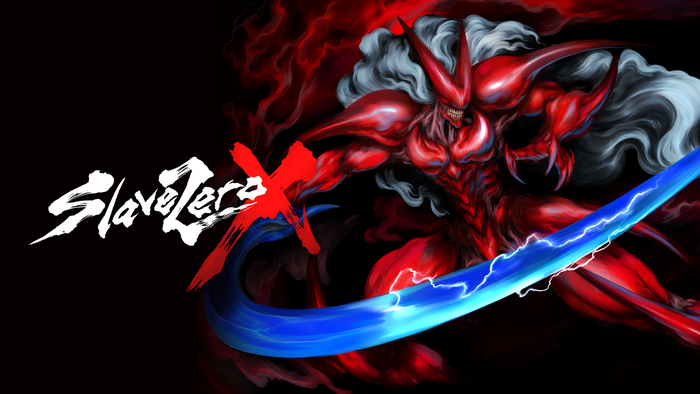Analyzing Video Games on the Basis of Film and Literary Criticism - Can It Be Done?
A follow up to my recent post "The Future of Prestigious Award for Video Games - Pulitzer Prize, Nobel Prize, Etc." This piece explores the meaningful aspects of video games and how we can begin to define what it is that makes a game "good."

[Originally posted on KitGuru Gaming.]
I recently wrote an article titled “The Future of Prestigious Awards for Video Games – Pulitzer Prize, Nobel Prize, Etc.” that I reposted on Gamasutra and ended up as a feature post. I wrote about the possibility of the video game industry to someday gain credibility in the form of prestigious award ceremonies similar to the Pulitzer and Nobel Prizes.
Upon beginning to write responses to individual comments, I decided my opinions would be better served in the form of another full-length post, dealing mostly with� John Flush’s initial question, “A problem with the industry gaining such respect is how do you declare what is meaningful out of games beyond the [storytelling] aspect?” This, I’m sure, is a question that game critics will battle throughout the existence of the medium. Since movies contain a visual component in addition to story and character development, perhaps it would be more telling to first analyze what makes a noteworthy film, or rather, a film that critics believe is impactful.

regm
In Roger Ebert’s review of the movie 8 ½ in the book The Great Movies, Volume I, he says:
The critic Alan Stone, writing in the Boston Review, deplores Fellini’s ‘stylistic tendency to emphasize images over ideas.’ I celebrate it. A filmmaker who prefers ideas to images will never advance above the second rank, because he is fighting the nature of his art. The printed work is ideal for ideas; film is made for images, and images are best when they are free to evoke many associations and are not linked to narrowly defined purposes.
In that frame of thought, it would follow that video games include ideas, yes, but just as film is “made for images,” video games are made for gameplay. After all, your brain isn’t merely absorbing ideas from games, and your eyes aren’t merely feasting themselves upon imagery – your fingers are busy working through levels and designated segments of the game all the way through until the game’s conclusion. This theory for video games as art is contingent upon each art form realizing their full potential within what it is that sets the medium apart from other mediums. However, this all depends on personal opinion and the particular aspects that set a game apart as a “good game.”
In the future, there will likely be a host of various theories (just as there are in the fields of literature and film). These theories may include (but not be limited to) games as art on the basis of storytelling; games as art on the basis of excellence in graphics; games as art on the basis of ingenuity of gameplay; and games as art on the basis of collaboration and overall cohesiveness of each of these elements – storytelling, graphics, and gameplay. While there are other components to video games, these particular elements are cited most often by game reviewers, critics, and fans as the main modes by which to classify a game as “good” or “bad.” Other components such as character development, voice acting, and music arguably serve as agents for the immersion of players further into the game’s world.

woww1861280x10241366Wy4O07
It seems as though video game fans have already created for themselves a canon of sorts (a body of games that represent the highest quality of games within the field), as the older games most often cited for their ingenuity include the series of Mario, Zelda, Final Fantasy, and World of Warcraft. These are the games by which gamers and critics measure other games. (These are also the games that even those outside the “gamer bubble” have likely heard of due to their importance within the gaming industry.)
The Mario games lack story (revolving mainly around the rescuing of a princess from an evil villain whose plans are to take over the kingdom, with the game consisting of very little dialogue or character development), but what Mario games lack in story, they make up for in gameplay. Zelda also contains a relatively simple story in which Link bravely fights to win back Princess Zelda from Ganon but also to reclaim pieces of the Triforce, which is a symbol of the world’s goddesses – Power, Wisdom, and Courage – and a channel by which an individual’s wish can be manifested into the world. (In fact, The Legend of Zelda was the first video game to be inducted into Spike TV’s Video Game Hall of Fame in 2011.) The Final Fantasy series includes installments rooted in storytelling and an ever-evolving battle system that currently strives to make battle systems unique for new games, with older games containing outdated graphics and newer ones more impressive graphics. World of Warcraft contains somewhat customizable and widespread methods for gameplay with limited story provided by quest givers. Yet, the main focus of the game is gameplay, as stated by the author of Reality is Broken: Why Games Make Us Better and How They Can Change the World, Jane McGonigal – after spending hundreds of hours grinding and leveling up, this is where “the real fun begins” – citing the raids that accompany the overarching story of good vs. evil in the never-ending conflict between the Alliance and Horde.
It is not solely the storytelling, graphics, and gameplay that make or break a game, and it is not always the collaboration of each of these elements that makes a game better than one that only incorporates one or two of these elements. Although gameplay sets video games apart from other mediums (just as images set films apart from novels), I contend that it is not merely the gameplay that turns fun games into masterpieces that can justly be considered noteworthy art forms (just as imagery in film is not merely what evolves it into a good film).
Gameplay should enhance the storytelling aspects of video games, just as imagery enhances the storytelling aspects of film and (according to Roger Ebert) gives movies the opportunity to “advance above the second rank.” An example of the ability for video games to propel themselves forward on the basis of game mechanics enhancing storytelling abilities is Braid. In a commentary on Braid in Michael Gapper’s article for Xbox World Magazine, he asserts, “[Braid] is a story that can only be told in a videogame, where the theme and the mechanics powering the game are one and the same.” However, it is not the gameplay itself that bestows upon players of Braid a new level of meaning but rather, the conjunction of game mechanics and storytelling. As such, it is also necessary to define powerful storytelling – what transcends great books into classic works of literature.

Braidlogo
Harold Bloom is one of the most acclaimed literary critics and wrote a book on the Western Canon, defining what the canon is and the works he considers essential to the canon. In contrast to the translation of the inscription on the Nobel Prize Medal for Literature, “And they who bettered life on earth by their newly found mastery,” Bloom asserts:
Reading the very best writers--let us say Homer, Dante, Shakespeare, Tolstoy--is not going to make us better citizens. Art is perfectly useless, according to the sublime Oscar Wilde, who was right about everything (15-16). The study of literature, however it is conducted, will not save any individual, any more than it will improve any society (29).
Although storytelling may not improve life on earth in the sense that we will benefit society through measurable means, Bloom sheds light into what literature can do for its readers:
The true use of Shakespeare or of Cervantes, of Homer or of Dante, of Chaucer or of Rabelais, is to augment one’s own growing inner self […] All that the Western Canon can bring one is the proper use of one's own solitude, that solitude whose final form is one's confrontation with one's own mortality (28).
Shakespeare will not make us better, and he will not make us worse, but he may teach us how to overhear ourselves when we talk to ourselves. Subsequently, he may teach us how to accept change, in ourselves as in others, and perhaps even the final form of change (29-30).
While not all literature critics will agree with Bloom’s assertions and many will not believe literary criticism can be applied to video games, ideas about storytelling through literature (and film) can serve as a starting point for questions critical to the validity of video games as an art form with significance similar to great literature and film – what good games are and what they aren’t.

western_canon
Perhaps it is the role of good literature to bring about “solitude” and further shape and define the “inner self,” perhaps it isn’t. Perhaps it is the role of video games to provide a different form of enlightenment for its players or to serve as an entirely different role altogether. But how is it that video games could not be considered art? After all, they encompass the original art form – storytelling – with other mediums that have long been considered art – music, still art, moving images – and merely add a new component – a means of interaction.
In Ralph Waldo Emerson’s series of essays (specifically “Essay II Self-Reliance”), he defines for us the implications of art transcendent to a “work of genius,” “In every work of genius we recognize our own rejected thoughts: they come back to us with a certain alienated majesty. Great works of art have no more affecting lesson for us than this.”
Maybe you can think of a few games currently that spoke to you on a level deserving of recognition, maybe you can think of more than a few. Maybe you have a limited experience with games and need to play a few more to find one that opens your eyes to the possibility that games can be considered art.
Can video games be considered art simply for their storytelling abilities, or are other components like graphics and gameplay equally as important – working with “the nature of [the] art” as opposed to fighting it? This, I believe, is something that each individual needs to define for themselves. Just as I personally give more credence to storytelling than to graphics, there are many others I’m sure who believe games should be more about the gameplay or rather, that gameplay and storytelling (and possibly graphics) should work in collaboration to produce a game truly worthy of praise on the level of awards held in such high esteem as the Pulitzer Prize and Nobel Prize. The video game industry is an exciting field due to its possibilities for the future: it is young yet and brimming with potential.
Read more about:
BlogsAbout the Author(s)
You May Also Like









